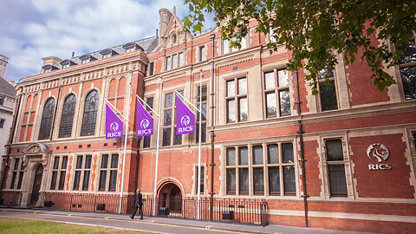One of the unique aspects of the construction and real estate sectors is that employees work together on complex projects that have visible results. You can actually go and visit the buildings and infrastructure that shape communities and cities. This brings a terrific sense of accomplishment for everyone involved, and yet the sector has struggled in recent years to utilise this to attract the next generation of professionals that will carry the torch. The result has been a growing skills gap in terms of what will be needed as the sector becomes more complex and technologically empowered.
The construction sector has traditionally focused on the materials, structures and processes that propel projects upward, sometimes to the detriment of other factors. It is, however, also an industry that is increasingly benefiting from a renewed focus on the people that make these projects possible. A major part of this is creating an environment that attracts younger and more diverse talent to a workforce undergoing demographic shifts as a large number near retirement.
As construction technology continues to revolutionize the processes that shape the built environment, forward-looking firms are positioning themselves for success by revolutionising how they interact with the most essential asset of any firm: its people.
Technology to empower people
While start-up culture is not without well-documented Diversity & Inclusion issues, there is also undeniably an energy to modern tech companies looking to create the next innovation that will revolutionise their respective sectors. Tech disruption may have taken a long time to impact construction in comparison with other sectors, even within the real estate space, but it is also now a major driving force as new ventures seek to make the industry safer, more efficient and more sustainable. This has an inherent appeal to younger and more diverse talent pools.
“Our profession exists to solve people problems. Without diversity of people at the heart of the critical thinking process, our solutions will fall short. Diverse people generate diverse ideas. These ideas free us from the echo chamber effect that stops us from making change in our industry. We need to do better, we need to do it faster, but we also need to do it more responsibly. The thought that we can help shape that transformation, now that’s what we should getting out of bed for. ”
Even at larger and more established firms, it is increasingly common to find in-house incubators that fund and promote innovation and experiment with solutions to real-world, on-site issues. These kinds of initiatives encourage new ways of thinking and also incentivise new voices in the room, particularly from young and up-and-coming talent within organisations.
Diversity and Inclusion can address the skills gap
The reality is that the current construction workforce is overwhelmingly white and male – and this group is also gradually aging into retirement while fewer young people are replacing them.
Importantly, leading firms and professional organisations, such as RICS, are addressing this by looking beyond programs to improve retention, address gender imbalances and attract young talent. Instead they are looking at diversity in the true broad sense which includes race, religion, sex and sexual orientation, and how to remove barriers to career progression for those traditionally less represented in the industry.
Still, it is one thing to make the right noises and another to put them into action. In my experience, creating and maintaining executive will is critical to lasting change and often improves with the use of tools such as unconscious bias training. Also, data and staff engagement surveys across an organisation is a critical backbone to a Diversity and Inclusion strategy.
Quality data enables a sound understanding of underlying issues, while thoughtful selection and implementation of proven interventions provides a means to measure and test return on investment decisions. Empowering working groups that include diverse people and have access and support from executive decision makers have also proven to be a great strategy for success.
- Georgia Bergers MRICS is Partnerships and Field Marketing at Hammer Technologies








